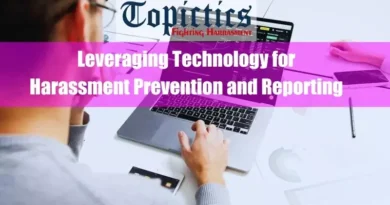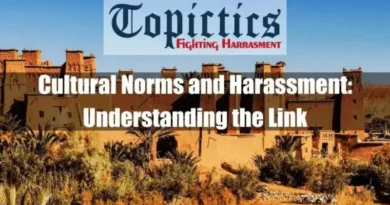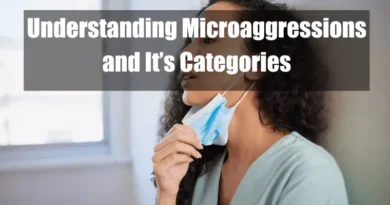Understanding Power Dynamics
Takeaways
| Key Points |
|---|
| Power dynamics refer to the complex relationships and systems that determine influence and control among individuals, groups, and institutions, shaping decision-making and resource distribution. |
| It encompasses various forms of power, including authority, which is the legitimate right to wield power, influence, which affects decisions without force, coercion, which involves threats or force, legitimacy, which concerns the fairness of power structures, and resistance, which challenges established systems. |
| Historically, power dynamics have evolved from early hunter-gatherer societies, where power was more egalitarian, to ancient empires with centralized control, and through to the rise of modern democracies that challenged traditional authority. |
| Power can be formal, associated with specific positions, or informal, relying on personal influence or expertise, and can exist in interpersonal relationships where balance is key to healthy dynamics. |
| It also manifests in structural forms, like systemic inequalities, and symbolic forms, where media and cultural representations shape societal perceptions and identities. |
Defining Power Dynamics
At its core, power dynamics are the intricate web of relationships that determine who has influence and control over whom and how this influence is exerted and experienced. It’s not a static concept but rather a dynamic dance between individuals, groups, and institutions, constantly influencing decision-making, resource allocation, and the very course of events.
Think of it as a complex ecosystem where different entities occupy various positions and wield varying degrees of influence. These positions can be formal, like a manager’s authority over employees, or informal, like a charismatic individual’s sway over a group.
Power can be wielded through explicit means like commands and regulations or subtler tactics like persuasion and manipulation.
Exploring Key Concepts

To fully understand power dynamics, we need to delve into some key concepts:
- Authority: The legitimate right to wield power, often granted by formal positions or social norms. For example, a police officer’s authority to arrest comes from their legal standing.
- Influence: The ability to affect another person’s thoughts, behaviors, or decisions without resorting to direct coercion. A friend’s persuasive advice can influence your career choices.
- Coercion: Using force or threats to compel someone to act against their will. A dictator’s regime might maintain power through fear and intimidation.
- Legitimacy: The perceived rightness or fairness of a power structure. A government elected through a democratic process enjoys greater legitimacy than one imposed through a coup.
- Resistance: The actions taken to challenge or defy established power structures. This can range from individual acts of dissent to organized movements like protests and revolutions.
Far from academic theory, power dynamics influence everything from family meals to global politics. Grasping how power works equips us to navigate relationships, identify societal inequalities, empower ourselves and others, and promote responsible leadership. Understanding power dynamics is not a privilege but a crucial tool for navigating life’s complexities and building a fairer future.
Power Dynamics Historical Context
A. From Primordial Power Struggles to Ancient Empires:
The earliest whispers of power can be traced back to the very origins of human civilization. Hunter-gatherer societies, while largely egalitarian, likely saw power concentrated in the hands of skilled hunters, resourceful gatherers, and charismatic leaders. As settlements grew and agriculture flourished, hierarchical structures emerged, with elites wielding control over land, resources, and religious authority.
Ancient empires, from the sprawling pyramids of Egypt to the majestic ziggurats of Mesopotamia, stand as testaments to the concentration of power in the hands of monarchs and priests. The divine right of kings, elaborate bureaucracies, and standing armies served as control instruments, shaping the lives of millions who toiled beneath the shadow of monumental edifices.
B. Shifting Sands of Power in the Classical World:
Yet history is not a static tapestry. Even within these seemingly rigid structures, seeds of dissent and change were sown. In Greece, city-states like Athens experimented with democracy, giving citizens a voice through direct participation in assemblies and voting. Philosophers like Socrates and Plato grappled with the ethics of power, questioning its legitimacy and advocating for just governance.
Meanwhile, in Rome, the Republic saw a complex interplay of power between the Senate, elected officials, and powerful military leaders. Julius Caesar’s ascent to power, culminating in the establishment of an empire, marked a dramatic shift, demonstrating the vulnerability of seemingly stable structures to the ambition and cunning of individuals.

C. The Medieval Tapestry: From Feudalism to Divine Authority:
The fall of the Roman Empire ushered in an era of fragmentation and feudalism. Power resided in the hands of landed nobles, who controlled vast swathes of territory and commanded the loyalty of peasant laborers. The Church, wielding the spiritual and intellectual authority of Christianity, emerged as a powerful force, shaping social norms and influencing political decisions.
However, this era was not devoid of challenges to established power structures. Peasant revolts, fueled by economic hardship and the desire for equity, erupted throughout Europe. Intellectual movements, like the rise of universities and the questioning of papal authority, laid the groundwork for future transformations.
D. The Dawn of Modernity: Shifting Paradigms and Redefining Power:
The Renaissance and Enlightenment marked a pivotal turning point in the history of power. Questioning divine rights, the rise of secular thought, and the emphasis on individual rights and liberties fundamentally challenged existing power structures. The American and French Revolutions, fuelled by these ideals, laid the groundwork for modern democracies, where popular sovereignty replaced the whims of monarchs and emperors.
However, these revolutions did not bring about universal equality. Slavery, colonialism, and economic disparities continued to cast long shadows. The 20th century witnessed new struggles for power, from the dismantling of colonial empires to the fight for civil rights and women’s suffrage.
E. The Contemporary Landscape: A Shifting Terrain:
Today, we find ourselves in a world where power dynamics continue to evolve under the influence of globalization, technological advancements, and demographic shifts. While traditional hierarchies haven’t entirely vanished, new power players have emerged, from multinational corporations and media giants to social media influencers and activist movements.
Demystifying Power: Exploring its Diverse Forms
Power is a chameleon, its true essence often veiled beneath various guises. We’ll peel back the layers and dissect the different types of power that sculpt our lives and shape our interactions. Buckle up as we embark on a journey through the multifaceted landscape of power dynamics!
A. Formal Power:
Formal power occupies the center stage, readily visible in hierarchical structures like corporations, governments, and educational institutions. It’s the power vested in designated positions, embodied by titles like CEO, president, or professor. This type of power grants individuals the authority to make decisions, allocate resources, and enforce rules.
Formal power can be legitimate and beneficial, ensuring order and facilitating efficient task completion. However, it can also lead to abuse, particularly when unchecked or concentrated in the hands of a few. History is riddled with examples of authoritarian regimes where formal power morphed into oppression and suppression.
B. Informal Power:
But power doesn’t always wear a name tag. Informal power thrives in the shadows, wielding influence through charisma, expertise, or strategic networks. A seasoned sales representative might sway clients with their charm. At the same time, a tech-savvy colleague’s advice carries undue weight due to their knowledge.
Informal power can be highly effective, fostering collaboration and promoting innovation. It can also create invisible hierarchies, where individuals without formal authority exert significant influence based on their personal qualities or social connections. This can sometimes lead to unfair advantages and hinder equal opportunities.

C. Interpersonal Power:
Power dynamics exist in a constant ebb and flow in the intimate realm of personal relationships. Partners, friends, and family members navigate a complex dance of influence, negotiation, and compromise. Factors like emotional dependence, communication styles, and shared history all contribute to the power dynamics within these bonds.
Balanced power in relationships fosters empathy, mutual respect, and healthy communication. However, imbalances can lead to unhealthy patterns, from emotional manipulation to controlling behavior. Recognizing and addressing power dynamics within relationships is crucial for fostering well-being and establishing healthy boundaries.
D. Structural Power:
Beyond individual interactions, power operates at a systemic level embedded within the very fabric of our societies. Structural power refers to the ingrained inequalities woven into social structures based on factors like gender, race, class, and sexual orientation. These invisible forces shape access to resources, opportunities, and even basic rights.
The consequences of structural power imbalances are vast and far-reaching. Systemic discrimination, marginalization, and exploitation all stem from ingrained power structures that favor certain groups over others. Understanding and challenging these injustices is crucial for fostering a more equitable and just society.
E. Symbolic Power:
Beyond the tangible, power thrives in the realm of symbols and narratives. Symbolic power is the ability to shape meanings, perceptions, and identities through cultural representations, media narratives, and dominant ideologies. Think of it as the power to control the stories we tell and the images we see, thereby influencing how we understand ourselves and the world around us.
Symbolic power can reinforce existing power structures, perpetuating stereotypes and marginalizing voices. However, it can also be a powerful tool for social change, allowing marginalized groups to reclaim their narratives and challenge dominant ideologies.
Power on the Stage: Examining Dynamics in Action

A. The Corporate Ladder – Formal Power and Its Challenges
In a fast-growing tech startup, the CEO has formal power. He makes key decisions, assigns resources, and drives the company’s growth. However, over time, employees feel micromanaged, and their innovative ideas are ignored. Once seen as effective, the CEO’s strong control begins to create dissatisfaction and stifle creativity.
This example shows the risks of unchecked formal power. While strong leadership is important, relying too much on top-down decisions can limit teamwork and innovation. Balancing authority with team involvement is essential for long-term success.
B. The Classroom – Interpersonal Power and Its Impact
An experienced teacher captures students’ attention in a lively classroom with her knowledge and engaging style. However, a quiet student in the back feels left out as the teacher unintentionally focuses on more vocal students. This creates an unspoken power dynamic that affects participation.
This example shows how interpersonal power can influence group settings. While positive influence can enhance learning, ensuring all voices are heard is important to create an inclusive environment where every student feels valued.

C. The Protest – Collective Action Against Structural Power
On a city street, protestors gather to demand environmental justice. They are united against a powerful corporation that is causing pollution. Though the group lacks formal power, their collective strength and strategic use of messaging create a strong resistance.
This example demonstrates the effectiveness of collective action in challenging entrenched power. When individuals unite for a common cause, their combined efforts can create significant change, even against powerful opponents.
D. The Newsroom – Media Power and Narrative Control
An experienced journalist uncovers a political scandal in a busy newsroom. While his position gives him the platform to report the story, he faces challenges from media ownership and political pressures that seek to control the narrative.
This example illustrates the complex interplay of power in the media. Journalists must navigate various influences while striving to report the truth, highlighting the importance of critically assessing media narratives for informed decision-making.
Power’s Echo: Consequences and Quests for Equity
Like a ripple in a pond, power sends waves that touch every corner of our lives. Now, we’ll examine the often-unseen consequences of power imbalances and explore the ongoing quests for a society where power dynamics are more equitable and just.
A. The Shadows of Inequality:
The first tremor of power imbalance resonates in the form of inequality. Structural power imbalances perpetuate disparities in access to resources, opportunities, and basic rights. Gender pay gaps, racial discrimination, and limited access to education for marginalized communities are just a few stark examples of how power structures shape life outcomes.
These inequalities breed social unrest, fuel conflict, and hinder collective progress. They chip away at social cohesion and erode trust in institutions. Recognizing and addressing these imbalances is crucial for building a more inclusive and just society.
B. Empowerment:
But amidst the shadows of inequality, rays of hope flicker through the efforts of individuals and communities striving for empowerment. This involves equipping individuals and groups with the tools and resources they need to challenge oppressive power structures and advocate for their rights.
Empowerment takes many forms, from grassroots movements advocating for social justice to educational initiatives to closing knowledge gaps. It’s about fostering critical thinking, providing access to information and resources, and building solidarity among marginalized groups.

C. Reconstructing Power Dynamics:
The quest for a more equitable future necessitates individual empowerment and a reconstruction of power dynamics themselves. This involves rethinking traditional hierarchies, decentralizing decision-making, and amplifying marginalized voices.
Examples include participatory budgeting initiatives, where communities allocate resources directly, or collaborative leadership models prioritizing shared decision-making. These transformations are not without challenges, but they offer a glimpse into a future where power is not wielded by the few but distributed more evenly across the social landscape.
D. Navigating the Digital Era:
The rise of the digital age has further complicated power dynamics, introducing new actors like tech giants and social media platforms that wield immense influence over information, communication, and even identity formation.
Understanding how power operates in the virtual realm is crucial for critically navigating online spaces, challenging algorithmic biases, and protecting individual privacy. It also necessitates holding digital power structures accountable and advocating for responsible technology use.
The journey towards a more equitable future is ongoing, requiring continuous effort and collective action. By understanding the multifaceted nature of power, acknowledging its potential pitfalls, and empowering individuals and communities, we can begin to reshape power dynamics and build a society where everyone has the opportunity to thrive.
Conclusion: Unveiling Pathways Towards Empowered Futures
We’ve reached the final leg of our journey through the intricate landscape of power dynamics. Here, we’ll tie up loose ends, offer actionable solutions, and leave you with resources to ignite your own journey toward a more empowered future.
A. Recap: A Tapestry of Insights:
This comprehensive exploration has shed light on the multifaceted nature of power: its various forms, from formal authority to subtle influence, its diverse manifestations in different contexts, and its profound impact on our lives. We’ve observed how power imbalances lead to inequality and marginalization, explored the ongoing quests for equity, and examined the challenges and opportunities of the digital age.
B. Solutions for Navigating Power Dynamics:
As we move forward, it’s crucial to translate these insights into practical actions. Here are some key solutions to consider:
1. Individual Level:
- Develop critical awareness: Learn to recognize power dynamics in everyday interactions, media narratives, and social structures. Question the status quo and challenge ingrained biases.
- Sharpen your own power: Invest in your skills, knowledge, and self-confidence. Develop effective communication and negotiation skills to assert your needs and advocate for yourself and others.
- Build solidarity: Seek out communities and allies who share your values and goals. Collective action amplifies individual voices and increases the effectiveness of resistance movements.
2. Societal Level:
- Advocate for systemic change: Support policies and initiatives that address structural inequalities like racial and gender disparities, economic injustice, and limited access to education and healthcare.
- Hold institutions accountable: Scrutinize the actions of governmental bodies, corporations, and media platforms. Demand transparency and ethical use of power.
- Foster inclusive participation: Promote diverse voices and perspectives in decision-making processes. Create platforms for marginalized communities to be heard and their needs addressed.
3. Digital Landscape:
- Practice digital literacy: Develop critical thinking skills to navigate the online world. Be aware of algorithmic biases and understand how information is curated and controlled.
- Support responsible technology development: Advocate for ethical uses of artificial intelligence and data collection. Demand transparency and accountability from tech giants and social media platforms.
- Empower online communities: Create safe spaces for diverse voices to flourish online. Counter hate speech and misinformation with credible information and constructive dialogue.
Remember: Change doesn’t happen overnight. It’s a continuous process fueled by awareness, action, and collaboration. The solutions outlined above are just the starting point; your unique skills, perspectives, and actions can contribute immensely to building a more empowered future.
FAQ
What is ‘Symbolic Power’?
Symbolic power, a concept introduced by sociologist Pierre Bourdieu, refers to the tacit, almost unconscious modes of cultural and social domination occurring within everyday social habits. It encompasses the ability to impose meanings and impose them as legitimate, thus shaping perceptions and social realities. This form of power is often maintained through misrecognition, where dominated individuals accept and internalize their subordinate status as natural or deserved.
Can you explain ‘Kyriarchy’?
Kyriarchy, coined by feminist theologian Elisabeth Schüssler Fiorenza, describes a social system or set of connecting social systems built around domination, oppression, and submission. Unlike patriarchy, which focuses solely on male dominance over women, kyriarchy encompasses various intersecting forms of oppression, including sexism, racism, classism, and more. It highlights how individuals can be both oppressors and oppressed, depending on the context and the specific social dynamics at play.
What does ‘Broligarchy’ mean?
Broligarchy is a neologism combining ‘bro’ and ‘oligarchy,’ referring to a societal system controlled by a small group of wealthy, tech-savvy men often perceived as ‘tech bros.’ This term critiques the concentration of power among a homogenous group, particularly in the technology sector, and their influence over societal norms, economic policies, and cultural trends.
What is the ‘Gender Power Gap’?
The gender power gap measures women’s proportional power in leadership and management positions relative to men. It focuses on the value and number of top executive women who hold decision-making authority in their organizations. This gap highlights disparities not just in representation but in the actual influence and control exercised by women compared to their male counterparts.
Define ‘Bargaining Power’.
Bargaining power is the relative ability of parties in a negotiation to exert influence over each other to achieve favorable terms. Factors influencing bargaining power include each party’s alternatives to the current deal, the value of what is being negotiated, and the urgency of reaching an agreement. A party with greater bargaining power can significantly sway the outcome of negotiations to their advantage.
What are ‘Bases of Power’?
Bases of power refer to the sources from which an individual or entity derives influence over others. The five primary bases are:
• Referent Power – Based on interpersonal attraction or charisma, leading others to identify with or want to emulate the individual.
• Expert Power – Derived from possessing specialized knowledge or expertise relevant to others.
• Legitimate Power – Stemming from a formal position or role that grants authority.
• Reward Power – The ability to provide desired rewards or benefits.
• Coercive Power – The capacity to impose penalties or sanctions. Understanding these bases helps analyze how power is exercised within organizations and social structures.
Explain ‘Coercive Power’.
Coercive power involves forcing someone to comply with one’s wishes through threats, punishment, or sanctions. It is based on the ability to deliver negative or remove positive consequences, compelling others to act out of fear of repercussions. While effective in ensuring compliance, overreliance on coercive power can lead to resentment and a toxic environment.
What is ‘Referent Power’?
Referent power arises from the interpersonal relationships a person cultivates with others. It is based on the allegiance and respect others have for an individual, often due to their charisma, likability, or the ability to inspire. This form of power leads others to identify with or want to emulate the individual, fostering influence through admiration.
Define ‘Expert Power’.
Expert power occurs when an individual possesses specialized knowledge or expertise others perceive as valuable. This form of power leads others to rely on the individual for guidance and decisions in areas where their expertise is recognized, thereby granting the expert influence over those who seek their knowledge.
What does ‘Legitimate Power’ entail?
Legitimate power exists when an individual holds a formal position or role that grants them authority over others. This power is recognized within the structure of an organization or society, leading others to comply based on the belief that the individual has the right to make certain requests or demands within their designated domain.
Explain ‘Reward Power’.
Reward power is based on an individual’s ability to provide others with desired rewards or benefits, such as pay raises, promotions, or positive evaluations. This power motivates compliance and desired behaviors by offering positive incentives, leveraging the human tendency to seek pleasurable outcomes.
What is ‘Counterpower’?
Counterpower refers to the extent to which a subordinate can resist or influence the power of a superior. It focuses on the subordinate’s access to alternative resources or support that can buffer the effects of the superior’s power, thereby balancing or mitigating the power dynamics within a relationship or organization.
What is ‘Informational Power’?
Informational power arises from individuals possessing valuable data or knowledge others need or desire. This form of power is based on the ability to access, control, and disseminate information, thereby influencing others’ decisions and actions. In organizational settings, individuals with informational power can shape outcomes by selectively sharing or withholding critical information.
Can you explain ‘Connection Power’?
Connection power is derived from an individual’s network and relationships with influential or important people. This form of power enables a person to leverage their contacts to gain favors, access resources, or influence decisions. Those with strong networks can utilize their connections in professional environments to facilitate collaborations, open opportunities, or navigate organizational challenges effectively.
What does ‘Formal Power’ entail?
Formal power, also known as positional power, stems from an individual’s official position or role within an organization or social structure. This authority grants them the right to make decisions, allocate resources, and direct the actions of others. Formal power is typically outlined in organizational charts and is accompanied by specific responsibilities and expectations.









